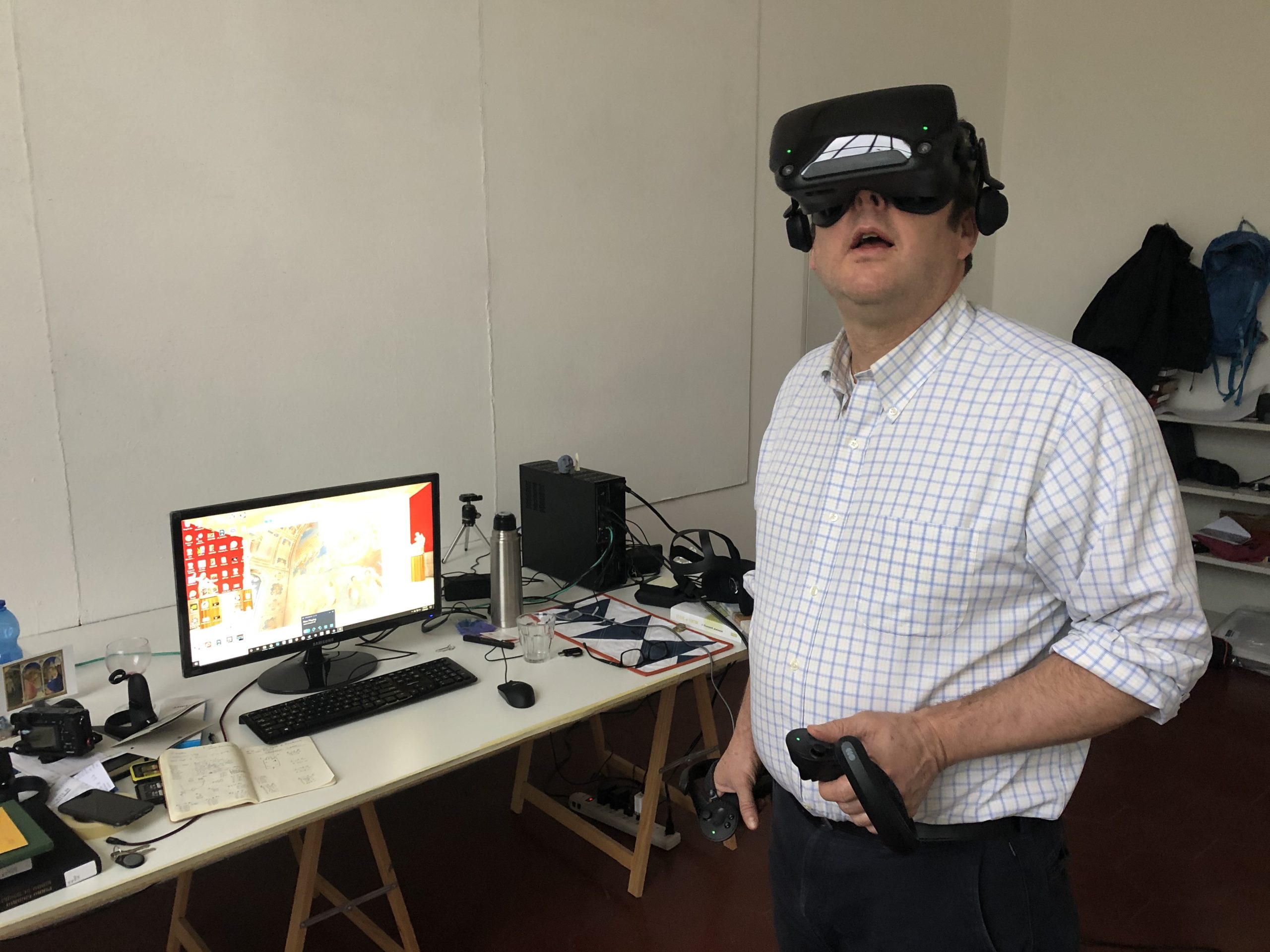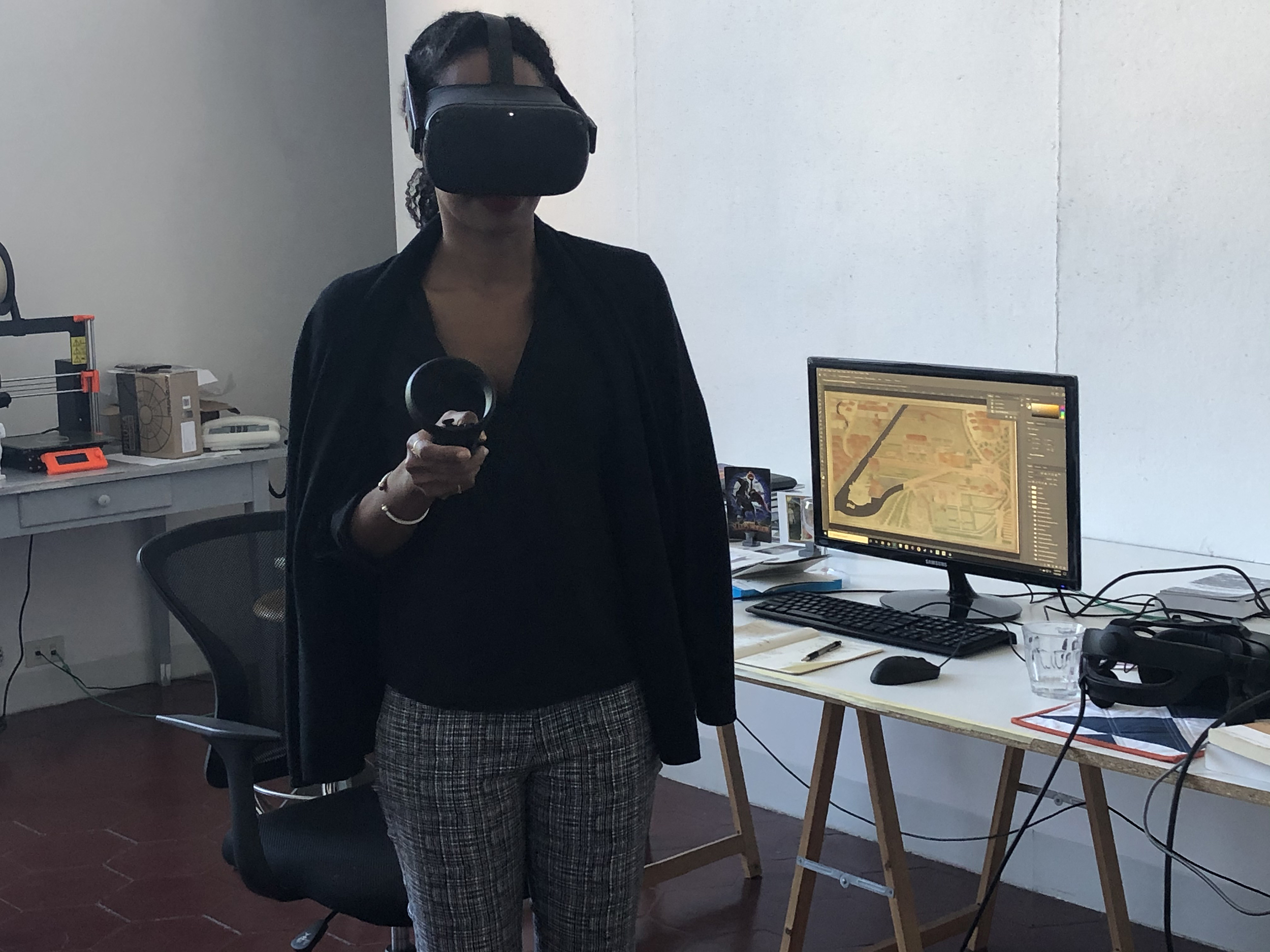
Virtual Experience Designer Matthew Brennan uses technology to help people travel through time and space…to see art.
What superpower do you wish you had? What would you use it for?

Cyberpunk writers imagine a future in which advanced computer technology falls into the wrong hands. Neuromancer, by William Gibson, was one of the first cyberpunk novels. Virtual Experience Designer Matthew Brennan, who also calls himself a human-computer interaction designer, calls Neuromancer “one of my favorite sci-fi books.”
In another of Brennan’s favorite reads — Snow Crash, by Neal Stephenson — Hiro Protagonist enters the Metaverse, a virtual reality he helped create. Protagonist battles an evil-doer named Raven and snow crash, a computer virus.
In 2016, when a company called Oculus began selling what they called Rift, the Metaverse became a bit more real. At the time, Brennan was doing doctoral work at Indiana University’s Luddy School of Informatics, Computing, and Engineering, which bought an Oculus Rift. “The first thing I did” was “to take a 3-dimensional scan” of Brennan’s favorite Italian church: San Carlo a la Quattro Fontane in Rome. He wanted “to see how it felt to stand in that space” while actually in Bloomington, Indiana.
Brennan, who had majored in architecture at the University of Virginia, likes the church Francesco Borromini designed because “it’s extremely geometric,” featuring “a series of ovals overlaid on top of each other.” “You have this incredibly organic, beautiful form and the more you look at it, the more you see the underlying geometry.”
Once he stood in the space he had created, using photographs he took of the church earlier in Rome, Brennan realized that “combining cultural heritage with the virtual reality technology was something that would allow people to travel — to see these places without having to take the time and the money” to visit them in person. Some of his undergraduate students at IU had never been outside of Indiana. Now they could spend time looking at some of the most important art in Italy without leaving campus.
Since then, Brennan has been busy creating his own sort of virtual reality. Put on one of the headsets in his studio and suddenly you’re staring at a sky-blue wall in another room, this one covered with frescoes created by Giotto for the Scrovegni Chapel in Padua.

Have you time-traveled to 14th-century Italy? The input device suspended between you and the closest fresco suggests that might not be true, as does Brennan’s voice, which urges you to grab the device, press a button, and beam yourself into the air to look at the frescoes you see high above your head.
Standing on … nothing, you focus your mind on the sensation of the real floor as well as the grey platform you see below you. If you’re lucky, you don’t worry much about the fact that in this virtual world, you’re floating in the air, well above the Scrovegni’s floor. Instead, you look straight-on at frescoes you could never see this way in the real chapel, where no one offers you the opportunity to levitate.
If you keep your headset on, Brennan may teleport you from Italy to France, a distance of over 1400 kilometers (more than 800 miles). Giotto’s frescoes give way to enormous stained-glass windows in a chapel suffused with natural light. You now stand in Brennan’s version of Sainte Chapelle, in Paris’s Palais de la Cite.
Do you see the Boxer at Rest, a bronze sculpture of a man probably created in the fourth century BCE? It’s one of several sculptures Brennan put in his Sainte Chapelle — works of art which have never actually been there. He can turn a chapel into a museum, adding three-dimensional models of artwork from around the world.

Brennan also adds texts and audio (some of it supplied by the founders of Smarthistory.) He teaches his audience about the places they are visiting (including Siena’s Palazzo Pubblica, where you can see Ambrogio Lorenzetti’s frescoes describing good and bad government). And he populates his VR adventure sites with portals that help you jump from one area of a room to another, letting you explore every area and piece of art. Neither gravity nor crowds of tourists keep you from seeing everything as closely as you would like.
Growing up in Catonsville, outside of Baltimore, Maryland, Matt attended a middle school that allowed him to choose a concentration (language, science, math, or art). “I did art. That was [the subject] you had every day,” for 90 minutes at a time. “I was not very good at math in middle school.” But Matt’s parents noticed his work with graphics cards, RAM, hard drives, and other computer electronics and sent him to computer camp. “I was into computer games and I liked computers.”
At camp, Matt learned basic programming and worked with other campers to create “our own little space invader game.” Each user “could control your avatar along the bottom of the screen and enemies, objects, or asteroids would come from the top of the screen. You had to blast them.”
Now Brennan creates new experiences. Instead of dodging science fictional asteroids, evil-doers, and computer viruses, his users are dazzled by art and architecture that actually exist. Tech for art-lovers? Or art for tech-lovers?
“The combination of VR with real-world environments is unique,” says Brennan, “because it appeals both to those who might be interested in travel or art history, but previously had no interest in VR, and those who are interested in technology, but previously hadn’t found art or architectural history particularly accessible or interesting.”


